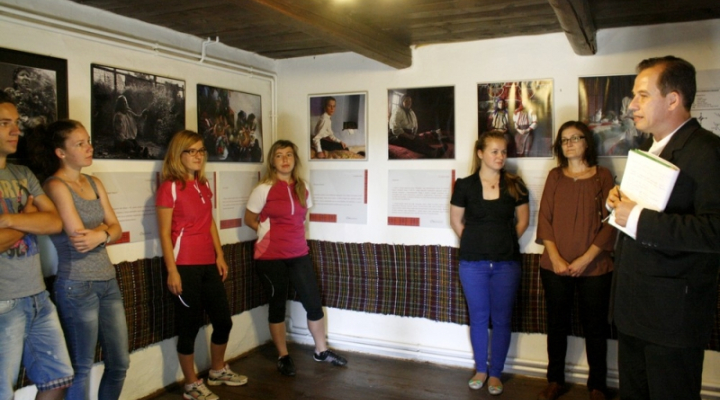Exposition at the Fészek Tájház Museum
A new exhibition has been opened in the vicinity of the Siculicidum monument, at the Fészek Tájház Museum in Siculeni, diplaying photographs of Gyula Ádám illustrating the life of the Csángó people in Romania.
The exhibition, which was opened on Saturday, 13th of September by MEP Csaba Sógor, was organised as part of the VI. Onion Festival. The RMDSZ MEP said: the purpose of the Fészek Tájház Museum is to show locals and tourists alike who and what the Siculicidum was about. Serving the same goal, the museum opened three exhibitions prior to this event about the Szekers from Bukovina in Hungary, about the history of the commemorative monument of the Siculicidum, and about the folkloric decorations of the csángó Szeklers in Gyimes and the Szeklers of Bucovina. “The new exhibition illustrates the life of the Csángó people from Moldova, but the Museum is already preparing a new one about the Csángós of Burzenland”- said the MEP.
Csaba Sógor added: the Hungarian Folk art has its own style and technique, never changing over the many years of our European history: “Our nation always felt the need to express our freedom not only in front of our adversaries, but also to ourselves. The exposition here shows that although the borders changed around us, our identity, our symbols remained the same through hundreds of years”, said the MEP.
The exhibition shows the villages where the Csángó people relocated to over the years, and whose first settlements were founded in the 14th century by the Hungarian Monarchy. Today, they live cut off from Transylvania by the Carpathian Mountains, in the region of Romania called Moldova, mostly in Neamț and Bacău counties. The Csángós are catholics: according to the 2012 census 185.000 catholic people live in the region of Moldova, but only 40.000 of them declared Hungarian to be their mother tongue or their second language. The Csángó-Hungarian villages have been going through an ethnic, linguistic and religious assimilation process for the last few hundred years.











